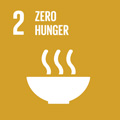- Docente: Gerardo Manfreda
- Credits: 6
- SSD: VET/04
- Language: Italian
- Moduli: Gerardo Manfreda (Modulo Mod 1) Frederique Pasquali (Modulo Mod 2)
- Teaching Mode: In-person learning (entirely or partially) (Modulo Mod 1); In-person learning (entirely or partially) (Modulo Mod 2)
- Campus: Cesena
- Corso: First cycle degree programme (L) in Food Technology (cod. 8528)
-
from Feb 18, 2026 to Apr 29, 2026
-
from May 05, 2026 to May 27, 2026
Learning outcomes
During the course the student will know the national and European legislation concerning food safety useful to assess the biological and chemical hazards associated with the consumption of animal products.
The student will acquire general knowledge on
- the effect of animal food handling on foodborne pathogens risk.
- how to develop different HACCP protocols to control the safety risk in food animal industry.
- sampling protocols to improve the risk assesment on animal food product
- epidemiology approach to estimate the foodborne disease
- environmental hygiene
Course contents
Module 1
European legislation on food hygiene and safety: reg. 178, hygiene package and regulatrion 2073/2005.
Food analysis aimed at food safety: sampling methods and analytical methodologies
Note on Epidemiological studies: Incidence and Prevalence. Risk factors.
Foodborne illness: the dimension of national and international problem.
Inspection in the meat chain: Ante and post mortem inspection during the slaughtering.
The different food chain in animal production and related foodborne disease.
Chemical contamination (e.g. veterinary residues) of foods of animal origin.
HACCP and examples of application
Module 2
EN / ISO standards for the detection and quantification of Salmonella, Listeria monocytogenes, Escherichia coli, Staphylococcal Enterotoxins and Histamine in the framework of compliance verification of safety criteria of Reg. 2073/2005
EN /ISO standards for the quantification of aerobic colonies, Enterobacteriaceae, coagulase positive Staphylococci, Campylobacter, Bacillus cereus in the framework of compliance verification of process hygiene criteria of Reg. 2073/2005
Confirmatory methods for the identification of food-borne bacteria: agglutination test, biotyping, morfology
DNA extraction, Polymerase Chain Reaction and agarose gel electrophoresis
Principles and applications of Sanger Sequencing and Next Generation Sequencing
Readings/Bibliography
- Notes of lectures
- Igiene e tecnologie degli alimenti: a cura di Gianpaolo Colavita. Editore Le Point Vétérinaire Italie 2023
- Food Safety Quality Control and Management Edited By Mohammed Kuddus. ISBN 9781032369990 Published April 5, 2024 by CRC Press
- ICMSF:Microorganisms in Foods 7. Microbiological Testing in Food Safety Management , published by Springer in 2018,
- Food Safety and Inspection An Introduction By Madeleine Smith.ISBN 9780815353546 Published July 31, 2018 by Routledge
Teaching methods
Oral lectures, scientific seminary, didattical visits to industries
Assessment methods
The course is part of the course Biology of microorganisms and Food Inspection, which also includes the teaching of Biology of Microorganisms. The final vote consists of the synthesis of evaluations of 2 courses that make up the integrated course. Tthe examination commission include professors in charge of the teachings that make up the integrated course.
The assessment of learning is through an oral examination.
The oral exam aims to assess the acquisition of knowledge related to proper risk management in the food sector, the ability to apply acquired knowledge, critical analysis skills, the ability to connect topics logically and deductively, and the use of correct language and appropriate technical terminology. The final grade, expressed out of thirtieths, takes into account the scores obtained in both exams.
Students with learning disorders and\or temporary or permanent disabilities: please, contact the office responsible (https://site.unibo.it/studenti-con-disabilita-e-dsa/en/for-students ) as soon as possible so that they can propose acceptable adjustments. The request for adaptation must be submitted in advance (15 days before the exam date) to the lecturer, who will assess the appropriateness of the adjustments, taking into account the teaching objectives.
It is possible to use calculation instruments if the proposed question requires it.
Registration for the exam must be done using the lists provided on alma esami
Teaching tools
projector, computer, instruments of microbiological laboratory, seminars on food safety topics or technical visits to companies producing food of animal origin
Office hours
See the website of Gerardo Manfreda
See the website of Frederique Pasquali
SDGs


This teaching activity contributes to the achievement of the Sustainable Development Goals of the UN 2030 Agenda.
